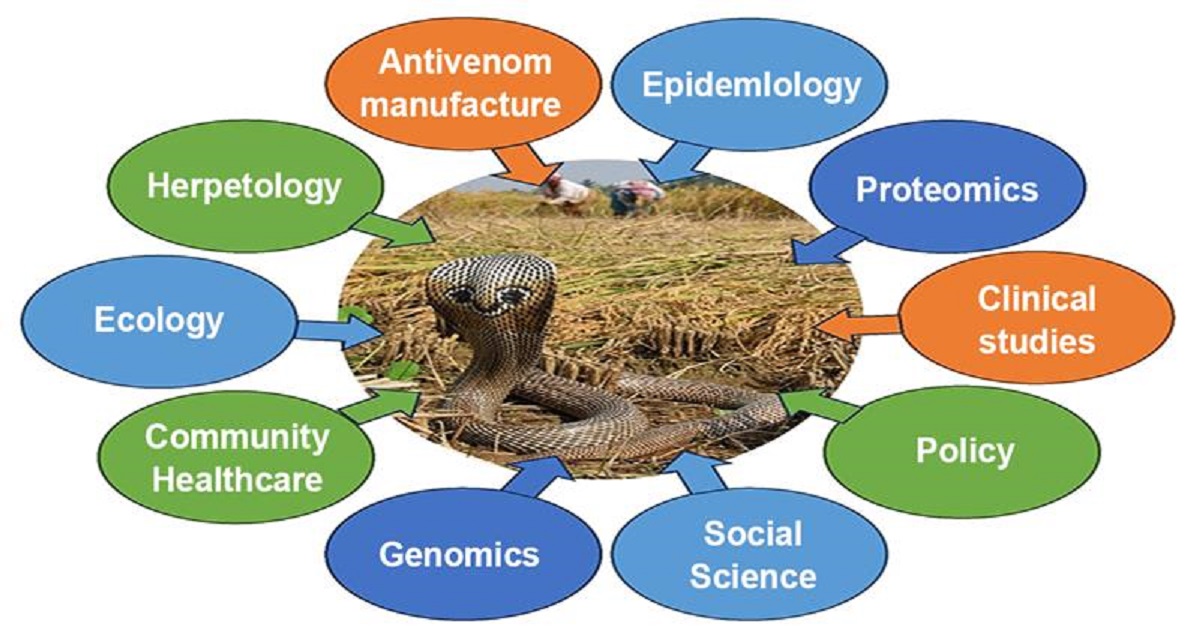Collaborative Approaches to Mitigation of Snakebite Envenoming
A special issue of Toxins (ISSN 2072-6651). This special issue belongs to the section "Animal Venoms".
Deadline for manuscript submissions: 15 March 2026 | Viewed by 2388

Special Issue Editors
Interests: adaptation; speciation; comparative genomics; proteomics; phylogeography; venom variation; snakebite envenomation
Special Issue Information
Dear Colleagues,
The aim of this Special Issue is to showcase studies that illustrate how collaboration between scientists from disparate fields (including, but not limited to, ecology, systematics, proteomics, genomics, clinical studies, social science and epidemiology) and non-scientists (including, but not limited to, field workers, health educators, NGOs, community health activists, policy makers and antivenom manufacturers) can lead to greater insights and progress towards reducing the global burden of snakebites than people working within their own separate fields. By doing so, we hope to encourage more kinds of these collaborations in the future.
Dr. Anita Malhotra
Dr. Karthikeyan Vasudevan
Guest Editors
Manuscript Submission Information
Manuscripts should be submitted online at www.mdpi.com by registering and logging in to this website. Once you are registered, click here to go to the submission form. Manuscripts can be submitted until the deadline. All submissions that pass pre-check are peer-reviewed. Accepted papers will be published continuously in the journal (as soon as accepted) and will be listed together on the special issue website. Research articles, review articles as well as short communications are invited. For planned papers, a title and short abstract (about 250 words) can be sent to the Editorial Office for assessment.
Submitted manuscripts should not have been published previously, nor be under consideration for publication elsewhere (except conference proceedings papers). All manuscripts are thoroughly refereed through a double-blind peer-review process. A guide for authors and other relevant information for submission of manuscripts is available on the Instructions for Authors page. Toxins is an international peer-reviewed open access monthly journal published by MDPI.
Please visit the Instructions for Authors page before submitting a manuscript. The Article Processing Charge (APC) for publication in this open access journal is 2700 CHF (Swiss Francs). Submitted papers should be well formatted and use good English. Authors may use MDPI's English editing service prior to publication or during author revisions.
Keywords
- snakebite envenomation
- antivenom
- interdisciplinary studies
- snake venom
- community health
- One Health
Benefits of Publishing in a Special Issue
- Ease of navigation: Grouping papers by topic helps scholars navigate broad scope journals more efficiently.
- Greater discoverability: Special Issues support the reach and impact of scientific research. Articles in Special Issues are more discoverable and cited more frequently.
- Expansion of research network: Special Issues facilitate connections among authors, fostering scientific collaborations.
- External promotion: Articles in Special Issues are often promoted through the journal's social media, increasing their visibility.
- Reprint: MDPI Books provides the opportunity to republish successful Special Issues in book format, both online and in print.
Further information on MDPI's Special Issue policies can be found here.







